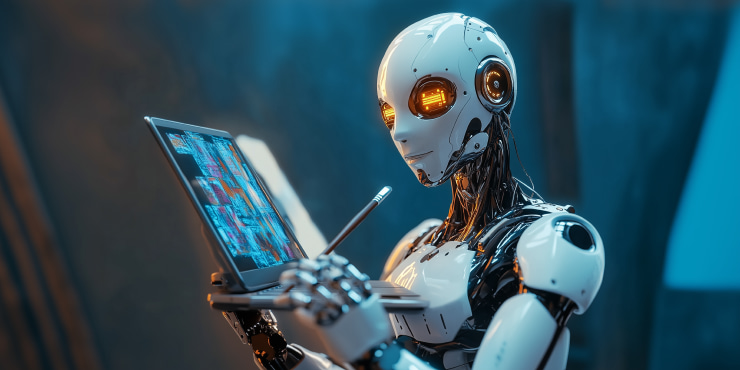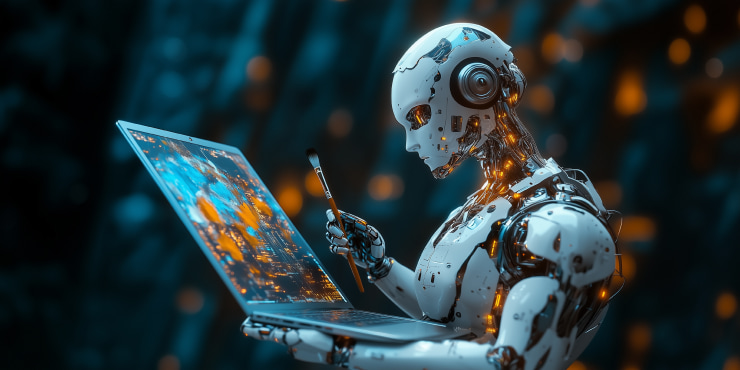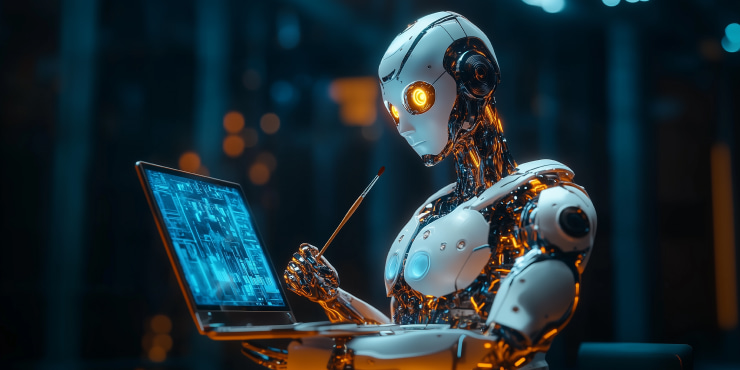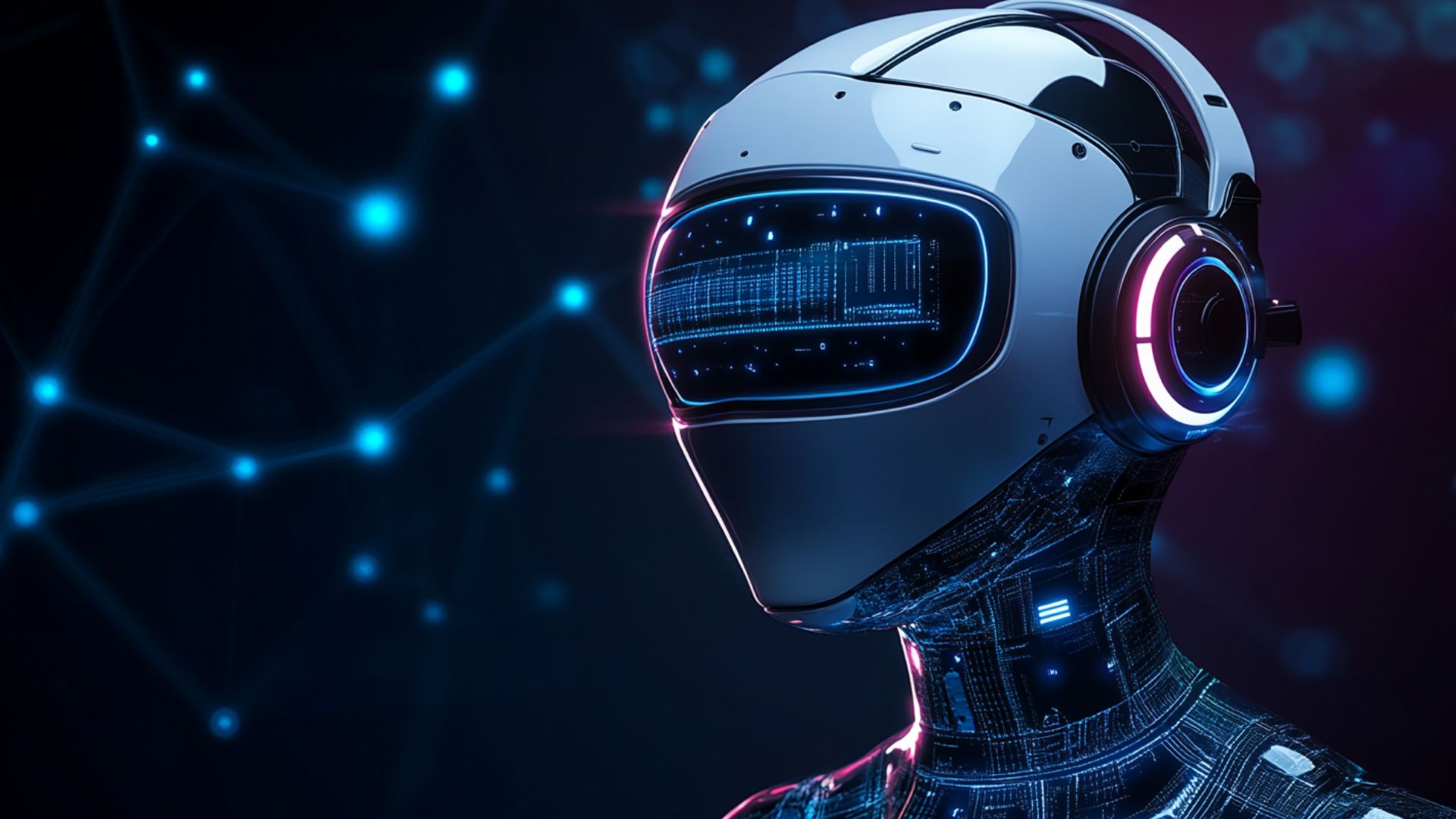Transforming Visual Technologies with AI in Image Processing

The transformation process involves several practical steps. The introduction of AI has helped to achieve great success in many areas. AI simplifies and improves work, research, and data evaluation, while also making significant advances in image processing. As a result, visual technologies continue to improve and become more sophisticated each year. AI image processing has achieved great success in many areas and improved work. Computers can analyze and enhance images with ultra-high accuracy. AI can recognize faces and interpret complex scenes within images.
The combination of deep learning and computer vision is a great success. The use of neural networks helps healthcare and other areas. Doctors can detect and diagnose various diseases at early stages. Thanks to AI, autonomous driving becomes safer by detecting objects in real-time. For safety, it is possible to recognize and interpret faces in images. AI for image processing is gaining great success in creating special fakes and enhancing images. Thanks to constant training, the exceptionally high resolution allows for image reconstruction. This is usually the case with old and low-quality images with low clarity. The future of digital technology promises to be even better and more advanced.
Understanding AI Image Processing
To succeed in image processing, you need the right tools. AI-driven algorithms and methods are essential to this process. They learn from and interpret large data sets. Deep learning is designed to analyze and enhance visual data in a customized way. More adaptive and accurate methods provide improved results. Here is a characterization of the main concepts of AI image processing:
- Computer vision. Computer vision enables machines to interpret visual information similarly to humans. They interpret images and understand their full content.
- Neural networks. Neural networks are designed to mimic human brain function. They help to recognize different patterns and essential elements in images.
- Recognition and classification. Image classification and object recognition are key capabilities of these systems.
- Improved resolution. A crucial aspect of resolution enhancement is the ability to restore and improve photo quality. Artificial intelligence improves the quality of low-resolution images.
Machine learning is essential for developing effective algorithms. Algorithms can detect various patterns and recognize specific objects. They usually recognize faces, essential objects, and necessary data for security systems. Deep learning image processing uses special neural networks. They are used to process a large number of images and increase their accuracy. This practice is usually common in medical imaging to detect certain diseases. A key application of deep learning is enabling autonomous driving and object recognition. Artificial intelligence improves traditional processing and provides excellent benefits. Here are some key benefits:
- Using filters and transformations allows you to adapt to new data. Artificial intelligence learns from new images without constant tuning.
- Artificial intelligence can detect faces, objects, and essential elements in real-time.
- Image processing techniques involve the use of tools based on artificial intelligence. The tools restore old, damaged, or low-quality images with poor resolution.
Key Technologies in AI Image Processing
AI image processing relies on several cutting-edge technologies. These methods are called machine learning and are essential for analysis and improvement. New images with increased resolution are created. Several key technologies are fundamental to creating these enhanced images. They have revolutionized machine learning for visual data interpretation. Here are their main characteristics:
- Neural networks. Artificial neural networks are modeled after the human brain. They are very similar and help to process visual data. Through training, they detect various patterns, visualization in an image, and features.
- Convolutional neural networks. CNNs are a fundamental component of AI-based image recognition systems. CNNs are essential for highlighting specific shapes and textures for recognition. They help to recognize different faces, medical images, and objects on the road.
- Generative adversarial networks. GANs are essential for generating realistic synthetic images. They use advanced techniques to generate compelling synthetic content. They are used to develop artificial intelligence and enhance images.
- Transformers. Transformer architectures represent a critical advancement in image processing. It is used to understand the entire image at once. It analyzes it and improves the performance of detecting particular objects.
AI image analysis is essential for many professional fields. Thanks to computer vision, artificial intelligence interprets and understands images. It recognizes objects, identifies them, and labels them, which is incredible for retail, robotics, and security. Face recognition is an essential process for biometric authentication. Thanks to computer vision, artificial intelligence can detect pedestrians, road signs, and road conditions.
Differences Between AI and Traditional Image Processing
Artificial intelligence has revolutionized imaging beyond traditional processing. Specialized tools and training methods have dramatically improved image enhancement capabilities. The analysis delivers enhanced accuracy and improved resolution. Traditional image processing also has its advantages, but they are not as powerful. Here is a basic description and comparison of traditional and AI image processing:
AI image processing:
- Deep learning models are used on huge data sets.
- The significant advantage is the use of special neural networks and deep learning.
- It automatically detects any features in the image.
- Continuous training on new images allows you to improve with accuracy.
- Adaptation to complex images and variations without manual adjustment is an advantage.
- Object recognition is a core capability of artificial intelligence systems.
- It is possible to recognize faces, restore images, and create a variety of deep fakes.
Traditional image processing:
- Based on manually programmed algorithms.
- It uses special filters and mathematical transformations to process images.
- It is impossible to adjust the exact parameters without human intervention.
- Constant updating of rules for new image variants provides limited adaptability.
- It has the advantage of being used for basic tasks such as changing the image function.
- Good at adjusting contrast, sharpening, and selecting good patterns.
Understanding what AI-based image processing actually entails is essential. Automation allows for higher accuracy and different models of detail detection. Image detection is about finding specific objects in an image. Artificial intelligence automated image analysis for speed and efficiency. A big advantage is working in multiple fields and providing constructive and clear insights. Continuous training in artificial intelligence makes it reliable and adaptive. Image recognition helps drivers in autonomous driving. Doctors can detect any diseases at early stages for further intervention.
Applications of AI Image Processing Across Industries

AI image interpretation helps to achieve good results in many areas. Providing constant automated and accurate analysis is a great advantage. Some industries require precise image analysis as part of their standard operations. AI tools provide numerous benefits across different applications. Here are the prominent examples of image-processing applications in various fields:
- Healthcare. A major benefit of AI image analysis is its ability to detect various diseases. AI analyzes X-rays, MRI scans, and CT images. The analysis is performed with exceptional accuracy to detect diseases in their early stages. Doctors can get the necessary data to prescribe individualized treatment. Microscopes with artificial intelligence improve the analysis of cellular structure. A striking example is Google's DeepMind AI, which can detect eye diseases at early stages.
- Security. The question “How is image processing changing security considerations across the world?” is essential today. Artificial intelligence enables real-time face recognition. It is used for access control and security at airports and on the street. Anomalies are detected, and various security system videos are monitored. Suspicious behavior of objects in the images is detected. One notable application is the use of image processing in shopping centers. Security cameras equipped with AI can identify suspicious individuals, allowing for immediate response.
- Retail. AI-powered visual search allows customers to upload photos to find products. People can instantly find products and virtually try on any makeup and clothes. A notable example is Amazon, which uses AI to recommend products based on image searches.
- Entertainment. Image processing using AI is essential for entertainment. AI creates unique, customized videos for entertainment purposes. AI can enhance and upscale low-resolution images and videos. A striking example is Netflix, which uses artificial intelligence to personalize content.
- Automotive industry. Artificial intelligence helps self-driving cars recognize pedestrians. Road signs and pedestrians are recognized in real-time. Unique systems analyze traffic flow to optimize profitable solutions on the road. The best example is Tesla's autopilot for image processing on the road.
AI Image Processing in Healthcare
Image processing is reaching a new level in healthcare. Recent breakthroughs in medical imaging and diagnostics have been revolutionary. Better communication between medical specialists is facilitated by high-quality image processing. Improving accuracy, speed, and efficiency in healthcare is key. The AI image processor helps doctors detect diseases. Doctors can improve outcomes and prescribe personalized treatment. Here is the main impact and revolution of artificial intelligence in healthcare:
- Medical imaging. Image processing is widely used to analyze various medical layouts. Doctors can detect diseases more accurately and in more detail at the initial stages. X-rays and computed tomography to confirm the results are a significant advantage. AI systems can detect various fractures, tumors, and lung infections with increasing accuracy.
- Diagnostics. In diagnostics, artificial intelligence improves image clarity and quality. MRI and ultrasound show promising results, and artificial intelligence interprets this data. It can detect multiple sclerosis, Alzheimer's disease, and other inflammations. AI for image processing helps to analyze microscopic tissue samples. Their analysis provides results on cancer and genetic diseases.
- AI-based tools. AI helps doctors detect abnormalities during scanning. The number of diagnostic errors is reduced, which is extremely important. Low-resolution images are improved. Doctors can see the picture better and can prescribe treatment. AI is increasingly being incorporated into surgical procedures. During operations, real-time visualization takes place to achieve accuracy.
AI Image Processing in E-Commerce and Retail
Artificial intelligence image processing is transforming and improving many areas. Its application is critical in e-commerce and retail. Customers get a good shopping experience through visual search. They can virtually try on products before buying them directly. Automatic labeling of products also complements productivity. This provides merchants with tools for quick, personalized customer solutions. This is how image processing works in retail and e-commerce:
- Visual search. AI enables customers to upload photos and find similar products using computer vision and deep learning. It recognizes different colors and shapes in images and their details. A significant advantage is faster and more accurate product search capabilities.
- Virtual fitting. Augmented reality measurements help customers try on clothes. AI image analysis requires several processing steps to achieve optimal results. This technology reduces return rates while increasing customer confidence. They can make online purchases and track them in real-time. Virtual notes allow tracking faces and bodies to provide a realistic fitting experience.
- Automatic tagging. AI analyzes product images and generates good descriptions. It improves organization and increases search accuracy. Its significant advantage is time-saving for retailers. They can avoid the burden of manually maintaining data.
Challenges and Limitations of AI Image Processing
Image processing techniques certainly have many benefits for any industry. It is revolutionizing various industries to ensure the optimization of work. Companies are getting clear images and researching their work. However, there are specific problems with ethical constraints. Data bias, ethical concerns, and processing limitations are the main challenges. Solving these problems will help achieve fairness and efficiency in the use of AI. Here are the main issues that arise with the use of artificial intelligence:
- Data bias. AI models improve continuously through ongoing learning processes. They can analyze data and learn from customer history for their experience. However, there is a bias or inaccuracy in the results during facial recognition. The problem arises with the inability to learn a particular nationality. AI image interpretation can also have privacy issues. There are often concerns about data use and personal privacy. AI-generated fakes can be used to spread disinformation. They are often used in fraud or identity theft. Solving this problem is crucial for the success of artificial intelligence.
- Ethical issues. Often, the use of incorrect information can create an ethical dilemma that needs to be addressed. The constant misuse of AI raises ethical issues. It is important to understand that training artificial intelligence with different data sets is essential. Establishing ethical rules for artificial intelligence is a necessary issue for productivity. Responsible use allows for valuable and good results without leaking personal data.
- Limitations of processing. Deep learning image processing is integral to success. Advanced deep learning models for image analysis often require specialized high-performance processors. There are problems with real-time processing. Often, autonomous driving or medical diagnostics experience specific issues. Real-time image analysis is essential for generating useful data in time-sensitive applications. Maintaining human safety and privacy is extremely important. Complex environmental factors like lighting and shadows can cause errors in image recognition. Incorrect interpretation of images leads to disruption of the entire workflow and compliance. Continuous improvements in computing and artificial intelligence algorithms will help overcome these problems.
The Future of AI in Image Processing

Today, it is essential to analyze the question, “How is image processing changing our world?”. Image processing is rapidly evolving and moving into new developments. New trends and advanced improvements are shaping its future. AI models are becoming more sophisticated and are constantly being trained. Creating accurate, efficient, and ethical image processing programs is an integral part of advancing this technology. Here are the main trends in the future of artificial intelligence in images:
- Emerging trends. Artificial intelligence models will require less data labeling. These advancements focus on improving speed and efficiency in image processing. Image and video synthesis will continue to improve the detection of various fakes. This technology enables the creation of 3D visualizations and more effective solutions. Neural rendering techniques are enhancing virtual reality experiences and opening new possibilities.
- Improvements. Image processing algorithms include continuous improvements due to higher resolution. Artificial intelligence improves images from low to high resolution. The significant advantage is more accurate object recognition, which improves over time. Energy-efficient models reduce computing costs. Image processing has become more affordable and sustainable for many applications.
- Research directions. The future lies in researching ethical issues and reducing bias. AI systems are being developed to be more fair while ensuring data reliability and privacy. The use of face recognition datasets is strictly controlled. AI image processing improves the speed and accuracy of any image analysis. Constant research and innovation make artificial intelligence competent, fast, and ethical.
Conclusion: The Impact of AI on Visual Technologies
Artificial intelligence is significantly impacting visual technologies and improving their process. Image processing is changing the entire process of how we analyze and interpret visual data. Image processing is relevant to many industries, such as healthcare, security, and retail. AI for image processing uses the latest technologies to provide innovative, fast, and efficient solutions.
- AI improves processing accuracy and automation based on machine learning. It can accurately detect any objects and recognize faces. A significant advantage is its application for medical diagnostics: doctors can detect any diseases at the beginning of their occurrence.
- Artificial intelligence helps innovations in many industries. The goal is to provide accurate visual representations that enhance analytical capabilities. Autonomous vehicles and visual search in e-commerce use artificial intelligence.
- It is essential to understand that data bias and ethical issues are the most important with the use of AI. Image processing AI can be a biased process and, therefore, requires a lot of control and training. Addressing these challenges will help unlock the full potential of AI image processing.
- The future of AI includes more autonomous learning and self-improvement capabilities. Advanced image processing technologies are reaching a new level. Addressing the ethical issue and data privacy is crucial.
- More precise, adaptive, and widely integrated AI systems are becoming part of our daily lives. Many fields need to use artificial intelligence for good practice. Addressing these challenges while advancing the technology will lead to remarkable future applications.


